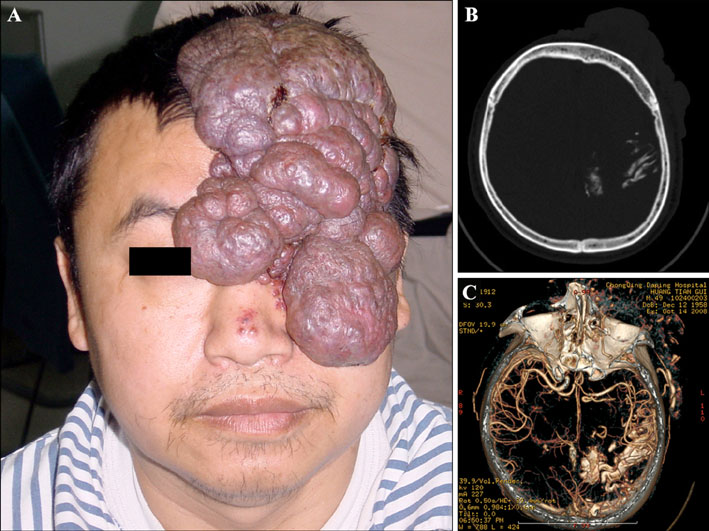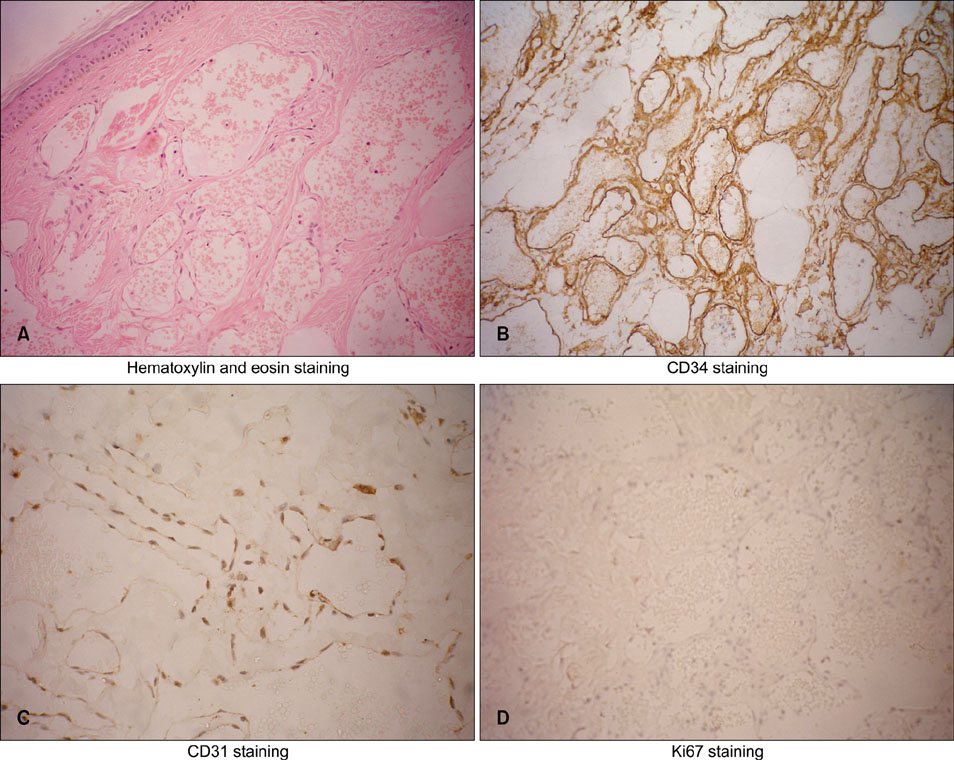Ann Dermatol.
2011 Nov;23(4):551-553.
Sturge-Weber Syndrome
- Affiliations
-
- 1Department of Dermatology, Daping Hospital, Third Military Medical University, Chongqing, China. wjjjj@163.com
- 2Department of Neurosurgery, Daping Hospital, Third Military Medical University, Chongqing, China.
Abstract
- Sturge-Weber syndrome (SWS) is a neurocutaneous syndrome, characterized by the association of facial port-wine hemangiomas in the trigeminal nerve distribution area, with vascular malformation(s) of the brain (leptomeningeal angioma) with or without glaucoma. Herein, we reported Sturge-Weber syndrome in a 50-year-old man, who presented port-wine hemangiomas and epilepsy. In this case, the patient's epilepsy episodes from his first year of life had been ignored and separated from the entity of SWS by his physicians, which led to delayed treatment. This case illustrates the importance of careful examination of patients of any age with hemangiomas in the trigeminal nerve with concomitant episodes of epilepsy. In such cases, there should be yearly neuroimaging screenings to guaranteed early interdisciplinary interventions from the time of definite diagnosis.
MeSH Terms
Figure
Reference
-
1. Comi AM. Update on Sturge-Weber syndrome: diagnosis, treatment, quantitative measures, and controversies. Lymphat Res Biol. 2007. 5:257–264.
Article2. Hennedige AA, Quaba AA, Al-Nakib K. Sturge-Weber syndrome and dermatomal facial port-wine stains: incidence, association with glaucoma, and pulsed tunable dye laser treatment effectiveness. Plast Reconstr Surg. 2008. 121:1173–1180.
Article3. Baselga E. Sturge-Weber syndrome. Semin Cutan Med Surg. 2004. 23:87–98.
Article4. Pascual-Castroviejo I, Pascual-Pascual SI, Velazquez-Fragua R, Viaño J. Sturge-Weber syndrome: study of 55 patients. Can J Neurol Sci. 2008. 35:301–307.
Article5. Rodofile C, Grees SA, Valle LE, Martino G. Sturge-Weber syndrome. Report of a case with poor dermatological manifestations. Arch Argent Pediatr. 2011. 109:e42–e45.6. Bourgeois M, Crimmins DW, de Oliveira RS, Arzimanoglou A, Garnett M, Roujeau T, et al. Surgical treatment of epilepsy in Sturge-Weber syndrome in children. J Neurosurg. 2007. 106:1 Suppl. 20–28.
Article7. Parsa CF. Sturge-weber syndrome: a unified pathophysiologic mechanism. Curr Treat Options Neurol. 2008. 10:47–54.
Article



